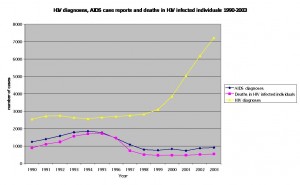Ruth Thorlby King’s Fund Presentation at our conference March 2006
Why introduce more choice in the NHS?
- Offering choice: a policy objective in its own right
- Choice as a mechanism for levering up quality
- Choice as means to make the NHS a more equitable service
What are the equity problems in the NHS?
- Choice to go private to get faster/better treatment
- No evidence of bias on decisions to treat within NHS waiting lists
- Lower intervention rates + higher prevalence amongst poorer groups
Examples of Inequities
- Unemployed, and individuals with low income and poor educational qualifications use health services less relative to need than the employed, the rich and the better educated.
- Intervention rates of Coronary Artery Bypass Grafts (CABG) or angiography following heart attack (AMI) were 30% lower in lowest socio-economic groups than the highest.
- Hip replacements were 20% lower among lower socio-economic groups despite roughly 30% higher need.
(from Julian Le Grand’s LSE lecture)
What choices have been made available in the NHS?
- Choice of hospital, for elective outpatient appointment, once a GP has decided to refer
- Not maternity, cancer and selected others
- Choice of hospital outpatient: designed as a tactic to reduce waiting times
No imminent, realistic choice of GP
Direct payments: social care
How could choice fix these inequities?
- Current patient choice policy: not designed to make any impact on these inequities
- Will require investment in advocacy and information to avoid creating a new dimension of inequity
- Information: to be made aware of choice (equal opportunity to choose)
- Information: allows creation of appropriate services
Choice theory
- Movement of patients sends a “signal” to providers to change
- Patients need information relevant to their needs
- Providers: need to know why patients are choosing them or choosing to avoid them (market research)
Study of HIV units and choice
People with HIV: can refer themselves to unit of their choice
Money followed patient (roughly)
Five units in London: qualitative interviews
Why did patients move? With what information?
Any effect on providers?
Patients
- Some moved- a minority
- In search of anonymity, but also better quality care-considerable distances
- Used internet, written information
- Word of mouth, especially peer groups and support groups trusted the most
- No comparable Trust data
Did providers care if patients left?
For a while, amongst senior staff
Focused minds on waiting rooms, politeness of staff, extra services, timing of services
Clinical quality?
Other factors: resources, autonomy, HIV a special case . During the period in question cash for HIV services was plentiful

The economics of HIV services has changed since the period of the research:

Choice: the ideal?
“I can remember seven, eight years ago, if a patient transferred to another unit you would get b*llcked from a dizzy height- how dare you, what did you do wrong, why did that patient transfer? I mean all hell broke loose, what were you doing wrong that meant the patient was unhappy? Senior doctor Trust C
Choice: the dream
“There have been times when I’ve had to send my patients to a consultant outside the HIV unit and there have been times when those consultants have been off-hand with my patients. I’ve had to phone them and explain that if I behaved like that with my patients, I wouldn’t have any patients” Consultant Trust E
Choice in HIV: reality
- Perception: educated (white, gay) men more inclined to move
- Small units: less evidence of patient movement
- Two big units: patients travel from all over England
- Quality? No evidence of difference
- Differentiation of services
Can more choice mean more equity?
- Current patient choice policy: limited impact on big inequities
- Advocacy and information is expensive: where are the incentives?
- Good quality information: will consumers use it?
- Skewed investment into “peripherals”?
